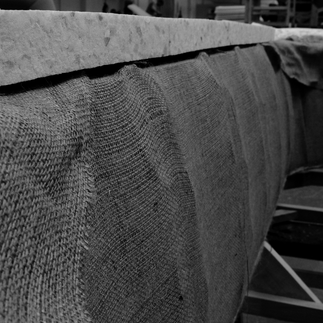Mastering the art of deep buttoning a leather Chesterfield is more than just a technique; it is an exploration of craftsmanship that dates back centuries. These elegant sofas have been a staple in opulent settings from royal parlours to modern living rooms. Understanding the process of deep buttoning can elevate a simple furniture piece into a stunning work of art. We will break down the intricate steps of deep buttoning a leather Chesterfield sofa, concentrating on both the practical aspects and the rich significance of this traditional craft.
The History of Chesterfield Sofas
The Chesterfield sofa is synonymous with luxury and style, once a fundamental piece in elite households. Its roots can be traced back to the 18th century, when it was supposedly commissioned by Lord Chesterfield. Initially, these sofas were covered in fabric and featured traditional tufting methods to create a welcoming surface.
As the years passed, the transition to leather not only improved the durability but also solidified the Chesterfield's status as a high-end furniture item. For instance, leather Chesterfield sofas made in the 19th century often showcased rich browns and deep greens, emphasizing both elegance and resilience. Most modern versions now blend this classic design with contemporary elements, making them popular in both traditional and modern homes.
Understanding Deep Buttoning
Deep buttoning is distinguished by its dramatic and textured look, setting it apart from standard tufting. The buttons are positioned further into the sofa, which creates deeper indentations that add dimension and visual interest. This technique not only enhances beauty but also provides auditory warmth; the leather creates soft sounds when touched, inviting interaction.
The main objective of deep buttoning is to tightly secure the leather to the furniture. This technique pulls the leather taut over the foam or stuffing, resulting in a clean and snug finish. Notably, deep buttoning can significantly enhance the durability of the piece. For example, sofas upholstered this way can last up to 20 years longer than poorly crafted alternatives.
Iconic Components Of A Chesterfield Sofa
The Chesterfield sofa has become an iconic piece of furniture for many homes. It is known for its distinct style and craftsmanship, including tufting on the back cushions and arms. This creates a look that is both timeless and comfortable.
While we see many forms of the Chesterfield throughout the 19th century, the first recorded usage of the word “Chesterfield” was not until 1900. Despite its 18th- and 19th-century roots, the Chesterfield seems to adapt itself to a variety of modern interiors. Whether upholstered in leather or in velvet, a Chesterfield sofa represents the best of marriages, one between exceptional comfort and gentlemanly style. It’s the kind of sofa that will bring elegance to any room, while also inviting us to plant ourselves against its tufted cushions, pick up a good book, and while away the hours lost in an adventure.
Iconic Components Of A Chesterfield Sofa.
Maintaining Your Chesterfield
Even the finest craftsmanship requires ongoing care. To keep your leather Chesterfield looking its best, follow these essential maintenance tips:
Regular Cleaning: Utilize a soft cloth to wipe the surface. Doing this weekly will help avoid dust accumulation.
Conditioning: Apply a high-quality leather conditioner every 3-6 months to keep the leather supple and prevent cracks.
Strategic Placement: Avoid direct sunlight, which can cause the leather to fade. Position your Chesterfield where it is shielded from harsh light.
Quick Spill Response: If a spill occurs, blot it immediately with a clean, dry cloth to prevent stains from setting in.
The Craft
Mastering deep buttoning on a leather Chesterfield goes beyond creating a visually striking piece. It embodies years of tradition and meticulous craftsmanship that define quality upholstery.
A Chesterfield is not merely furniture; it represents history and artistry, capable of becoming a cherished heirloom in your home.
































